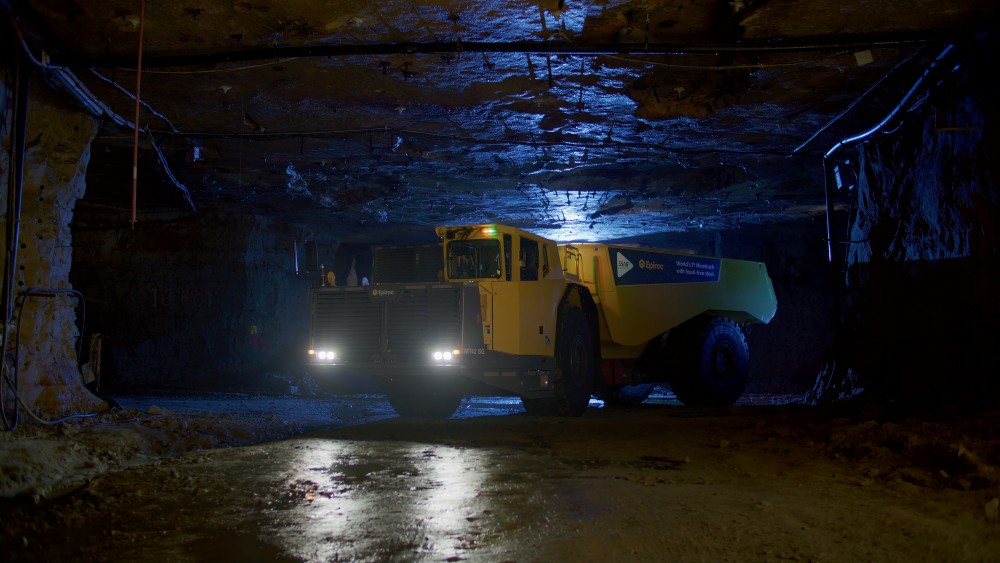PERSPECTIVE
The class logic behind Washington’s anti-strike law against railroaders
As President Biden and both parties in Congress moved to unilaterally impose a contract on 120,000 railroaders, the constant refrain from all quarters of Washington was that this was necessary to protect “working families.” The impact of a national rail strike to the economy, they warned, would be $2 billion per day and lead to major shortages of necessities.
Though it found no reflection in the corporate media, which was busy creating a synthetic public opinion against the railroaders, the working class treated these warnings with contempt. Workers supported a rail strike and wanted to join them in a fight for a decent standard of living. The struggle on the railroads itself is part of the biggest upsurge of the working class in generations.
The cost of a strike to “working families” is a variation of a larger big lie repeated over the last two years that blames the push for higher wages by workers for the rising cost of living. Runaway inflation, according to this theory, is caused by a “wage price spiral,” in which wage hikes to compensate for inflation only drives inflation up even more. The only way to stop this vicious cycle is by curbing wage growth, politicians and major economists stressed.
But quietly, amongst themselves, they admit this is a lie that turns reality on its head. This was demonstrated by a recent notice to investors by Swiss bank UBS, first reported by The Hill, which acknowledged that “margin expansion”—i.e., profiteering by major corporations—is the main component of inflation, not wage increases.
“Unit labor costs, which are measured by the Labor Department to determine how much businesses are paying for workers to produce their goods and services, have been getting outpaced by profits over several quarters,” The Hill reported. The outlet also cited a report by the Bank of International Settlements, which found that the danger of “wage price spirals” has been grossly overstated.
Not taking into account inflation, wages have increased, amid massive labor shortages caused by the pandemic, by between 4 and 5 percent over the last two years. However, inflation is far higher, peaking at over 9 percent and currently at 7.7 percent. Meanwhile, profits in the United States reached a new high of $2.522 trillion in the second quarter of 2022, while margins have surged to 15.5 percent, the highest levels since 1950, according to Commerce Department figures released in August.
Major corporations have seized upon pandemic-related shortages, greatly worsened by the US-NATO proxy war against Russia in Ukraine and the buildup against China, to engage in unrestrained price gouging. As is well known, the surge in gasoline prices following the start of the war occurred even though the price of crude oil itself remained relatively unchanged. In the rail industry, the most profitable in America, carriers have made use of massive delays and congestion to justify further price increases.
This divergence between wages and profits is not a coincidence. Capitalism is a system of exploitation in which the source of all profits is created by the surplus value extracted from the labor of the working class. Inequality is a central feature of this system.
But it is also the outcome of deliberate policies carried out by the US and world governments designed to bolster profits by curbing wage cuts and attacking the standard of living of the working class. The policy of the Biden administration is determined not one iota by dishonest phrases meant for public consumption, but entirely by the class interests of American capitalism.
The rapid move to impose the anti-strike law came as a shock to many, but it is merely a continuation and deepening of the policies that Biden has pursued for nearly two years. His pledge to be the most “pro-union president in American history” was always meant to signify the administration’s support for the union bureaucracy, which has spent decades sabotaging workers and suppressing strikes.
The White House is in a corporatist alliance with the bureaucracy to suppress wages and labor costs. Earlier this year, they worked together to block strikes in the refinery industry and the West Coast docks. This result of this is that wage increases have been even lower for unionized workers than for nonunion workers, at roughly 3 versus 5 percent.
Now, the union bureaucracy is telling railroaders that they have no choice but to meekly submit to the congressional intervention. They are speaking not as innocent bystanders but as co-conspirators. They have worked deliberately with Washington to block a rail strike, first by supporting Biden’s appointment of a mediation board in July and then through endless delays to self-imposed strike deadlines to buy Congress time to intervene if necessary.
The other critical element to this policy is the sharp increases in interest rates by the Federal Reserve. For all of their professed concern about the potential damage to the economy by a railroad strike, the ruling class is deliberately trying to engineer a recession through its monetary policies.
“Reducing inflation is likely to require a sustained period of below-trend growth,” Fed chairman Jerome Powell explained in an August speech. “Moreover, there will very likely be some softening of labor market conditions. While higher interest rates, slower growth, and softer labor market conditions will bring down inflation, they will also bring some pain to households and businesses.”
This policy, including the propaganda lie of the need to combat “inflation” and a “wages-price spiral” used to justify it, is consciously modeled on the US monetary policy of the late 1970s, known as the “Volcker Shock,” after then-Fed Chairman Paul Volcker. In 1979, Volcker explained the policy more bluntly than even Powell when he demanded, “The standard of living of the average American has to decline.”
This sparked the biggest recession to that point since the Great Depression, wiping out hundreds of thousands of factory jobs in the space of a few years. It was consciously used as a weapon against the demands of workers for wage increases to keep pace with inflation, which fueled a significant strike wave in the mid-1970s.
The Volcker Shock was the beginning of a massive, decades-long redistribution of wealth from the bottom up. While wages and living standards for workers have stagnated or declined for the past 40 years, profits, share values and income inequality have risen to their highest levels on record. This was a global process, but it found its most extreme form in the United States, the center of the world financial system.
The main response of the US government to the pandemic was not to carry out public health measures to save lives, but to pump trillions of dollars to shield the financial system and major corporations from the economic impact. These vast sums of money, which dwarf even the bailouts in 2008–2009 during the Great Recession, represent a vast debt which can only be repaid through the increased exploitation of the working class. Living standards, already pushed to the brink, have to be reduced even further.
What has been the result? Workers are being reduced to the level of industrial slaves. Railroad workers are unable even to schedule doctors’ appointments or spend time with their families. “Our lives belong to the railroads,” as one railroader put it.
But the situation confronting rail workers is not unique. The conditions in the US increasingly resemble those of the 1800s, or are in some respects even worse. There are countless factories in the United States where 80 hour workweeks, and even working for months on end without a single scheduled day off, are the rule. To compensate for workers lost due to resignations, injury or COVID-19, thousands of poorly trained supplemental workers are being herded into workplaces. This has created unsafe working conditions that have led to horrifying industrial accidents, such as the death of Steven Dierkes when he fell into a crucible filled with molten metals at a Caterpillar foundry.
This has produced a surge of strikes and other forms of social protests, both in the US and around the world. The response of governments, driven by the logic of its class policy, is to resort to open repression. Biden’s attack on the railroaders’ right to strike finds its reflection in similar measures being taken by governments all over the world.
Three essential lessons for the working class flow from this. The first is the class character of the state, which is not a neutral body standing above society, but a “committee for managing the common affairs of the whole bourgeoisie,” as Marx put it. As workers enter into a struggle over wages, working conditions and other basic issues, they find themselves more and more locked in a political struggle with the capitalist state. The first condition for a victory in this struggle is the complete independence of the working class from all the capitalist parties, both right and nominally “left.”
The second is that a movement of the working class depends upon the development of organizations independent of the pro-corporate trade union apparatus—rank-and-file committees, composed of and controlled by the workers themselves, through which they can unify their struggles across industries and countries. To this end, the International Committee of the Fourth International has initiated the formation of the International Workers Alliance of Rank-and-File Committees (IWA-RFC).
The third lesson is the social interests of the working class are incompatible with the maintenance of the capitalist system. Capitalism, which long ago became obsolete, can only maintain itself through driving the working class to the brink. The opposition in the working class must therefore be rooted in an anti-capitalist, socialist perspective, based on the reorganization of society to meet human need, not private profit.










 Russia has closed off two larger areas in the north for the period November 3 to 5. One Notice to Air Missions (NOTAM) is activated over the Barents Sea west of Novaya Zemlya, while another is active over the White Sea north of Arkhangelsk. Source: NotamMap / Barents Observer
Russia has closed off two larger areas in the north for the period November 3 to 5. One Notice to Air Missions (NOTAM) is activated over the Barents Sea west of Novaya Zemlya, while another is active over the White Sea north of Arkhangelsk. Source: NotamMap / Barents Observer



/cloudfront-ap-southeast-2.images.arcpublishing.com/nzme/AWFQ5IKVERAQFNPPHRFJVHA4OU.jpg)
/cloudfront-ap-southeast-2.images.arcpublishing.com/nzme/YMSNYXQYD5GT3HEC7SAKNW6QCU.jpg)
:focal(1700x1239:1701x1240)/https://tf-cmsv2-smithsonianmag-media.s3.amazonaws.com/filer_public/00/6e/006eaf32-713f-4631-b3e5-a383963dbcb9/gettyimages-533745884.jpg)
/https://tf-cmsv2-smithsonianmag-media.s3.amazonaws.com/accounts/headshot/MargaretOsborne.png)